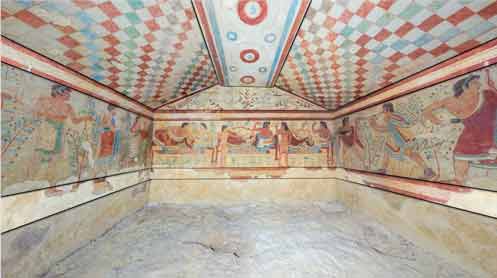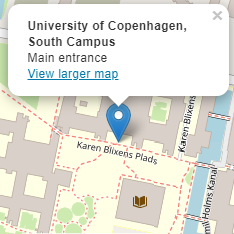The Painted Tombs of Tarquinia
New results and perspectives

Lecture by Matilde Marzullo, PhD fellow, State University of Milan, Department of Cultural Heritage and Environment.
Abstract
The painted tombs of Tarquinia (UNESCO World Heritage site since 2004) are one of the most well-known and investigated phenomena of the Etruscan funerary context. Centuries of systematic research has considerably extended the number of potentially painted hypogeai in Tarquinia.
The qualities that characterize Tarquinia do not seem to distinguish them from other Etruscan metropolis. This suggests the existence of specific beliefs at the heart of the local design of the funerary space.
The research project presented in this paper discusses the choices and the motivations at the root of the formation and development of the painted tombs of Tarquinia, considering each local peculiarity, growing directly from the data collected systematically in all the five hundred monuments.
For the first time, this brings together all the graphic, architectural and descriptive information: the result is a system of tools created for the specific needs of Etruscan funeral wall painting, expressly developed to deepen the understanding of the Tarquinia district. As a result, it is now possible to observe the distribution of the hypogeai during time, inducing the reasons, goals, social value and the role of monuments within the community.

